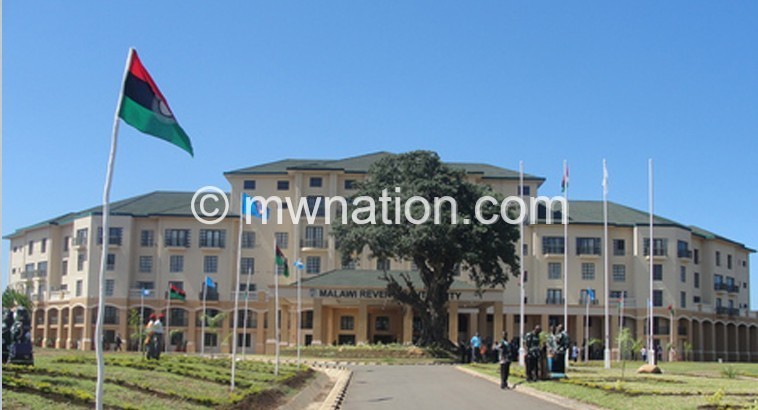MRA upbeat on digital tax system
After missing a March 2023 deadline to roll out a fully functional integrated tax administration system (Itas), Malawi Revenue Authority (MRA) remains upbeat that the current version can help Treasury to meet its goals on revenue collection.
In a Memorandum of Economic and Fiscal Policies agreed with the International Monetary Fund (IMF), the Malawi Government through the Ministry of Finance and Economic Affairs agreed to launch all the Itas modules by March 2023.

Treasury has, however, not completed the installation of the audit modules at the back end of the system.
But MRA director of corporate affairs Steve Kapoloma on Tuesday allayed concerns that the perceived delays would undermine government’s capacity to generate revenue, a key component of the country’s drive to address perennial budget deficits and rein in soaring public debt.
Speaking on the sidelines of a public lecture by Minister of Finance and Economic Affairs Sosten Gwengwe at Malawi University of Business and Applied Sciences in Blanyre on Tuesday, he said the government prioritised the installation of front-end modules to help taxpayers interface with the system.
He said: “We installed all the modules on the front end of the system. Taxpayers perform various functions on the system, including registering, filing returns, paying taxes, requesting information on taxes and filing objections.
“The only thing remaining is the audit modules on the back end of the system.”
Kapoloma said the audit modules depend on data collected from the front end.
“So, it made little sense to prioritise the audit modules if we did not have the data that we are collecting with the front-end modules,” he said.
Itas, also known as Msonkho Online, has two components, namely the front end that allows the taxpayer to connect with the revenue collection body and the back end that allows MRA staff to improve efficiency in tax collection.
Kapoloma said MRA staff are performing the audits using manual systems, but expressed optimism that the revenue collecting agency would complete the installation of the back-end modules by September this year.
He, however, said the improvements on the Msonkho Online have improved the efficiency in tax collection and reconciliation.
Said Kapoloma: “We now have a holistic view of our customers. We can trace whom our registered taxpayers are doing business with. If they are not registered, we can bring them into the system.
“If they under-declared taxes or did not file tax returns, we can use the records from other taxpayers to compel them to comply with the existing tax laws. With an automated system, we can check this faster and improve revenue collection.”
In his lecture, Gwengwe said boosting domestic revenue collection is the best option for Malawi to finance its budgets and reduce the country’s dependence on donor support.
Promoting the use of digital systems such as the Itas is one of the critical components of the Domestic Revenue Mobilisation Strategy (DRMS) launched in 2021 which policymakers hoped would address the loopholes in the country’s revenue collection framework.
The DRMS aims to increase the ratio of the country’s domestic revenue to gross domestic product by five percentage points from the current 14 percent to 19 percent in the next five years.
In the current fiscal year, domestic revenue is estimated at K2.24 trillion, representing 14.7 percent of GDP, and out of the domestic revenue, tax revenue is estimated at K2.13 trillion while non-tax revenue is estimated at K114.34 billion.





